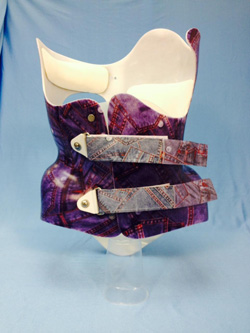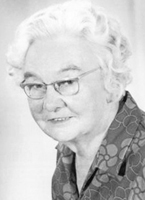|
Orthologix brings you quarterly information to keep you current on industry news, trends and insights. Orthologix is an orthotics and prosthetics practice delivering evidence-based care throughout the Delaware Valley.

FEATURED PRODUCT 
The Cheneau® Brace and the Schroth Method for Scoliosis
The Cheneau brace is a thermoplastic scoliosis brace modeled on a hyper-corrected positive plaster cast of the patient. This is a three-dimensional correctional brace that has significant pressure and expansion areas built into it, providing correction in all three anatomical planes.
The brace is not merely a brace, but an all-embracing therapy to treat idiopathic scoliosis. The biomechanical design of the brace implements physiotherapeutic exercises and uses curvature-specific modules based on the Schroth Method.
Schroth Method
The Schroth Method for scoliosis is a conservative exercise in a three-dimensional approach to elongate the trunk and correct imbalances of the spine. The goal is to develop the inner muscles of the rib cage in order to change the shape of the upper trunk and correct any spinal abnormalities. The patient utilizes specific exercises to straighten, centralize and de-rotate the spine with corrective breathing techniques.
Exercises are designed based on the curve patterns and severity, as well as the patient's function and mobility. The goal is to create awareness of the new posture and alignment through position, repetitions and breathing. Exercises are designed to reduce the flat back and rib prominence and restore alignment of the pelvis. Exercise positions may be modified in order to create the optimal position for the patient.
The Schroth therapist guides the patient with tactile stimulus so the patient has an understanding of where they need to breathe and elongate to create muscle activation to correct the curve.
Goals of Exercise: 
- Stabilize curves
- Mobilize stiff body parts
- Improve postural alignment
- Teach activities of daily living
- Promote corrections
- Enhance neuromuscular control
- Increase muscle strength and endurance
- Reduce pain
- Improve cardio-pulmonary function
Difference from Other Braces
The brace takes 15 different curvature patterns into consideration, which de-rotates the body much better through the longitudinal axis, unlike other braces.
Benefits
The main benefit of the brace is the unique and highly effective biomechanical design tailored specifically to the patient. Successful treatment with the brace is based on targeted and consistent implementation.
Back to top

CASE STUDIES
“The effectiveness of the Schroth method of physical therapy for treating an adult with idiopathic scoliosis in an outpatient clinic in the United States with third-party payer constraints”
Berdishevsky, Hagit.
Scoliosis 2013, 8(Suppl 2):O1
Conclusion: These primary findings suggest that out-patient physical therapy utilizing the Schroth method may be a successful alternative to the traditional methods of treating scoliosis.
To read the study, visit: http://www.scoliosisjournal.com/content/8/S2/O10
“Long-term effects of the Chêneau brace on coronal and sagittal alignment in adolescent idiopathic scoliosis”
Ming-Qiao Fang, MD, Chong Wang, MD, Guang-Heng Xiang, MD, Chao Lou, MD, Nai-Feng Tian, PhD, Hua-Zi Xu, MD
Journal of Neurosurgery: Spine Oct 2015 / Vol. 23 / No. 4, Pages 505-509
Conclusion: The Chêneau brace can be useful for preventing curvature progression in patients with AIS. However, the results of this study reveal high variability in the effect of brace treatment on sagittal and pelvic alignment. Treatment with the Chêneau brace may also influence sagittal global balance.
To read the study, visit: http://thejns.org/author/Fang%2C+Ming-Qiao
“Effectiveness of Chêneau brace treatment for idiopathic scoliosis: prospective study in 79 patients followed to skeletal maturity”
Katarzyna Zaborowska-Sapeta, Ireneusz M Kowalski, Tomasz Kotwicki, Halina Protasiewicz-Fałdowska, Wojciech Kiebzak
Scoliosis 2011 6:2
Conclusion: Conservative treatment with Chêneau orthosis and physiotherapy was effective in halting scoliosis progression in 48.1% of patients. The results of this study suggest that bracing is effective in reducing the incidence of surgery in comparison with natural history.
To read the study, visit: http://scoliosisjournal.biomedcentral.com/articles/10.1186/1748-7161-6-2
“European braces widely used for conservative scoliosis treatment”
Theodoros B. Grivas, Angelos Kaspiris
Stud Health Technol Inform. 2010;158:157-166.
Conclusion: Correction of spinal deformities is achieved in conservative treatment with passive and active brace mechanisms. The mode of operation of modern braces is in accordance with various principles of correction, namely active or passive extension with the aid of a neck ring and correction by lateral pads, lateral pressure according to 3-point principle, compression, bending the trunk towards the opposite side, active bracing and correction by means of pressure exerted by bands during movement and by means of metallic blades.
Regarding the outcomes of brace application, the Cheneau-Toulouse-Munster brace has been found to decrease the coronal shift forward, the coronal tilt, the axial rotation, and to increase the sagittal shift forward and the sagittal vertebral tilt (3-D correction), obtaining an average primary correction 41% (thoracic, lumbar, double) (n = 52 patients) and a long term correction 14.2% thoracic, 9.2% lumbar double curves: 5.5% in thoracic & 5.6% in lumbar. In a recent report, at the end of treatment there was an improvement of Cobb angle correction of about 23% and after 5 years there was a stabilization of about 15 % (p value < 0.05). Therefore, it could be stated that conservative treatment with Cheneau brace not only stops progression, but it also reverses the scoliotic curve.
To read the study, visit: http://www.sosort.mobi/pdf/European_braces.pdf
Back to top

PROFILE
 Katherina Schroth
Katherina Schroth
The system of exercises for scoliosis was developed in Germany in 1927 by the late Katherina Schroth, who was researching treatments for her own scoliosis condition. She suffered from moderate scoliosis while growing up and underwent treatment with a steel brace at the age of 16 before she decided to develop a different treatment for herself.
She worked to correct her deformities by inflating the concavities of her body selectively in front of a mirror. She attempted to mirror the deformities by overcorrecting with the help of certain pattern-specific corrective movements. The treatment included specific postural correction, correction of breathing patterns, and the correction of postural perception.
By the 1960s, the Schroth Method had become the standard non-surgical treatment for scoliosis and was further developed by Katherina’s daughter, Christa Lehnert-Schroth.
The first studies were carried out from 1989-1991, with the first prospective study published in 1995 in German.
The Schroth family has authored a number of books and articles to educate others about their method. Dr. Manuel Rigo was one of the most important international instructors who brought the original Schroth method program to the U.S. and the UK and investigated the outcomes of the treatment. Today, the Schroth Method is recognized as an alternative to surgery or other treatments all over the world.
Back to top

LEGISLATIVE NEWS
State Lawmakers Pushing Telemedicine Coverage in 2016
State legislation is heavily contributing to the expected reimbursement/coverage uptick in 2016, as more states consider legislation requiring coverage for telemedicine and in-person visits alike.
To date, 29 states and Washington D.C., have enacted legislation ensuring that private insurers offer reimbursement for telemedicine at equivalent levels with in-person services, provided the care is deemed medically necessary. Many of the laws enacted in 2015 will take effect in January 2016.
In the past year, more than 200 pieces of telemedicine-related legislation have been introduced in 42 states. Not surprisingly, these legislative approaches to telemedicine vary widely, but there are four common telemedicine delivery methods states are considering as part of ongoing legislation in 2016
1. Synchronous Audio and Video
Under telemedicine coverage and practice regulations, real time audio-video is considered the gold standard for telemedicine delivery. A close second, accepted across many states, is interactive audio with asynchronous data transmission of the patient's medical information. There are many situations where synchronous audio-video is neither feasible nor clinically necessary for appropriate medical action (e.g., teleradiology and telepathology both use asynchronous tech). Yet, even for synchronous audio-video, there remains variation among states regarding how, when and where these services are covered. For example, some states allow patients to conduct video consults from any location, whereas some mandate the patient be located at a qualifying originating site or a rural area. The trend, however, is to remove these artificial barriers and allow coverage of telemedicine consults regardless of the patient's location.
2. Remote Patient Monitoring
Remote patient monitoring (RPM) is, by nature, a service without in-person equivalent. Therefore, very few states include RPM in their commercial insurance coverage laws, with some exceptions being Delaware and Mississippi. Similarly, fewer than two dozen states offer Medicaid FFS coverage of RPM services. Moving into 2016, as payers and providers recognize telemedicine's cost-savings benefits for patients with chronic illnesses and push for it, and as better home health care technologies proliferate, we are sure to see more legislation requiring coverage for RPM. One place to look will be states with older telehealth coverage laws, as providers in those states may push for an update to those laws to include RPM.
3. Asynchronous (Store and Forward)
Store and forward – the electronic transmission of medical information, including pre-recorded videos, images, and documents – is covered only by a minority of states because most have defined telemedicine as "occurring in real-time," or "using live video." Fewer than a dozen states expressly mandate coverage of store and forward telehealth in their commercial coverage laws. But in those states that do cover store and forward, insured patients can enjoy a powerful and convenient care benefit. Examples include Colorado, Connecticut, Hawaii, Montana and several more. Approximately the same number of states include coverage of store-and-forward in their Medicaid FFS program benefit.
4. Cross-State Services
Another purported limitation on telemedicine expansion is state physician licensure requirements, meaning that physicians are not permitted to practice across state lines unless duly licensed. Whether state licensure truly is a material obstacle to telemedicine remains to be seen, as many providers have built (and are building) robust multi-state telehealth service offerings using professionals licensed in the states where the patients are located. That said, changes are on the way, as eleven states have already adopted the Federation of State Medical Boards (FSMB)'s Interstate Medical Licensure Compact with bills pending in nine more states, though its effective date is pending.
Combined with revised federal Medicare rules, favorable state laws and board rules have the power to significantly grow telemedicine use and availability – something we expect will occur throughout 2016. Expanding state legislation is among five telemedicine trends driving health care transformation in 2016 and beyond. Next, we will cover retail clinics and employer onsite health centers on the rise.
For more information on Foley's Telemedicine Practice, visit Foley.com/telemedicine
Back to top

CONFERENCE
Conference
APTA's NEXT Conference & Exposition, Feb. 17-20, Anaheim Convention Center, Anaheim, California.
Back to top

Q & A
Please feel free to submit your questions on the Cheneau® Brace and the Schroth Method for Scoliosis as well as any other issue you would like addressed.

Back to top

Educational Workshops and Inservices
Orthologix is available to present educational workshops and inservices for your group or your facility. Email us at info@orthologix.com to schedule.

We hope you have found this issue of the Orthologix E-news informative.
Thank you for your subscription.
Back to top
|